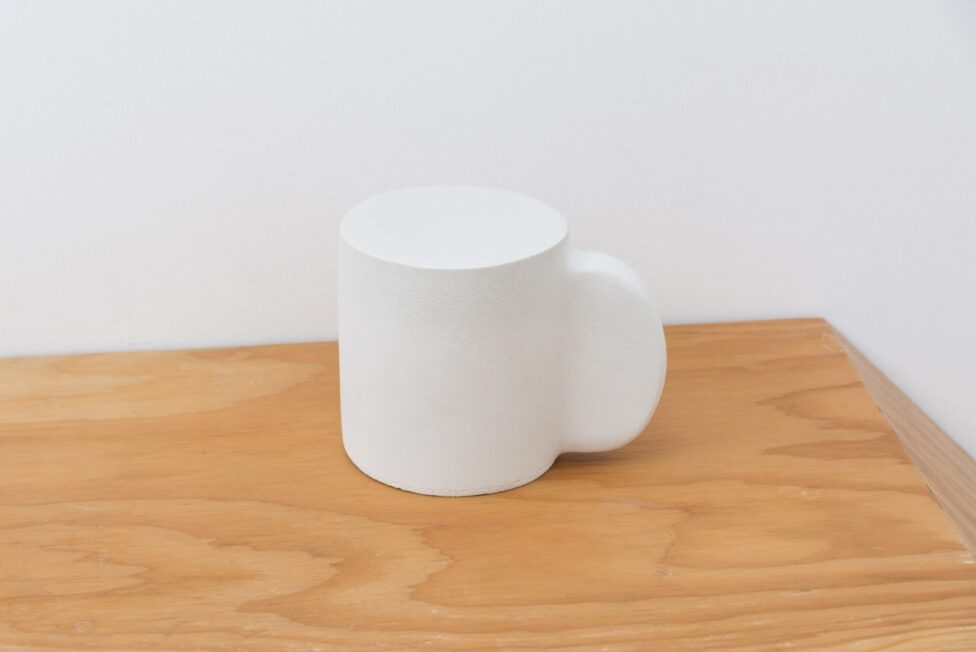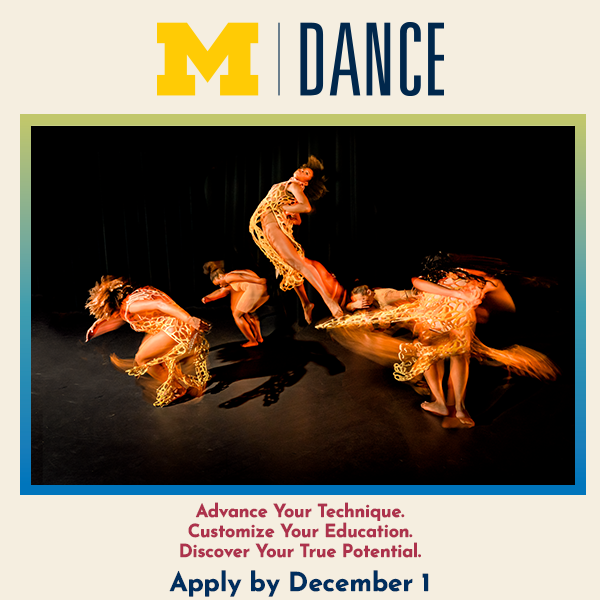Orlando Tirado: …It is interesting that we are talking about family. Gordon, I consider you my family, partly because I have seen you through so many changes and evolutions, the way I have seen my own brother and sister, and because you have been there when I (beat) didn’t know I needed you.
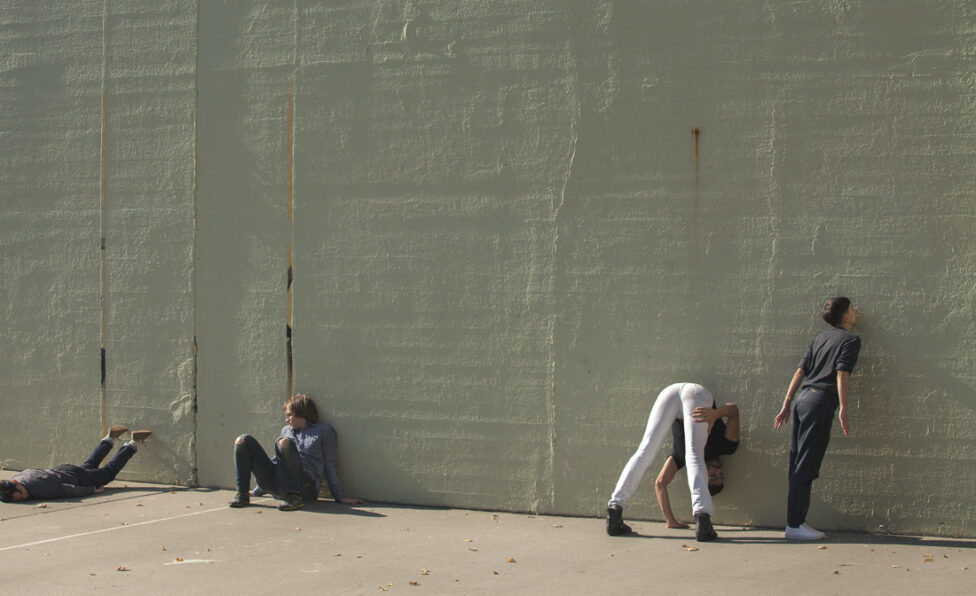
Gordon Hall, STAND AND, 2014, performance view. Photo: Amy Mills
Gordon Hall: It is true that we are a kind of family, even as we drift further and closer together over the years through all our changes. I have been thinking and reading about kinship, about what it means to create long-lasting relations outside of the biologically reproducing family, and how to exist within these relationships over time I think these have always been urgent questions for people, especially gay people, but I also think that as a world we need to be thinking about how to better care for each other, how to better care for all the people on earth, and to be pursuing modes of kinship that don’t necesitate the creation of new lives. So this kind of expanded thinking about kinship feels very necessary to me right now, which includes kinship with non-human beings and inanimate objects. I am really excited about a new book co-edited by Donna Haraway and Adele Clarke called “Making Kin not Population,” which takes up these questions in a variety of beautiful and politically urgent ways.
OT: When I think of the word “family” I think about caves and evolution of the species, about that primitive survival instinct before we had language for objects, but we were creating tools. I say this because in hindsight, your work seems to be located between object, kinship, and language to me. Where in the past, you called attention to certain postures to reveal a kind of politics and you undercut the utility, value, or place of rudimentary objects (like shims or benches) to show how they support, adjust, and altogether delineate how our bodies inhabit space. You called attention to interiority and exteriority with an underlying concern for the welfare of the body. But “Brothers and Sisters,” the group of works you made for the Renaissance Society last year, feels very personal. The objects here are your collection. And this is the moment you have chosen to share them with us. And somehow we feel special because of that. Why did you choose to title the performance “Brothers and Sisters”? Can you talk more about your choice and what “brothers and sisters,” or siblings, means to you?
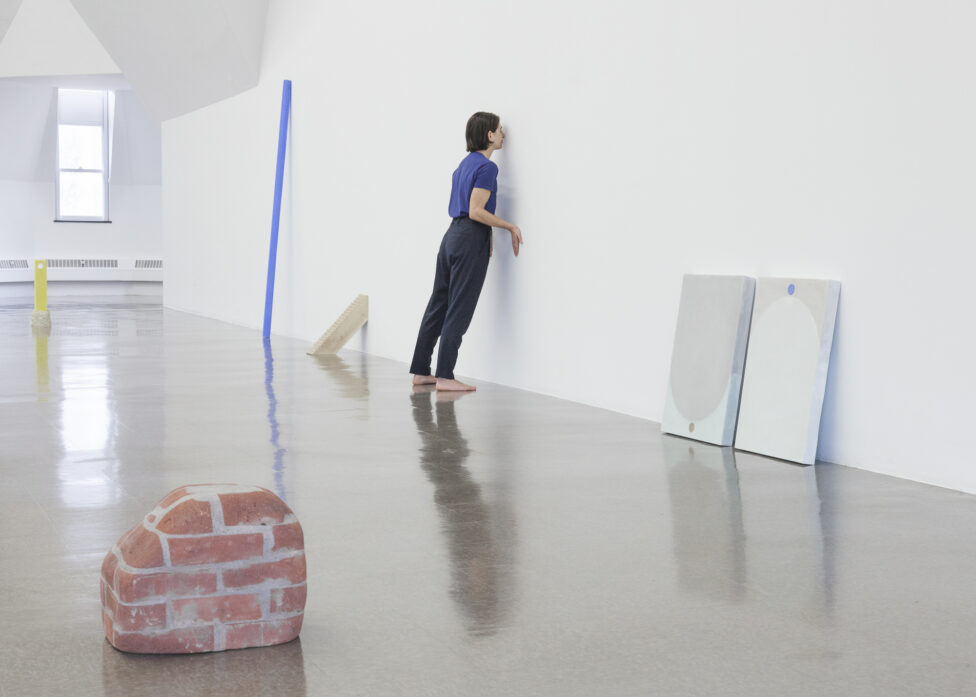
Gordon Hall, Brothers and Sisters, 2018, performance view. Photo: Meg T. Noe
GH: The title “Brothers and Sisters” came from learning about the Shakers, the millenarian Christian sect that flourished in the US in the mid-1800’s. Shaker society was celibate, and all the members of the groups lived in houses together as “brothers” and “sisters,” often in identical but mirror-imaged rooms across the hall from one another. I feel admiration for many aspects of Shaker life, especially their devotion to craft as a form of worship. And it’s interesting that the dwindling of Shaker society was, at least in part, brought on by increasingly conservative laws around what kinds of relationships can be considered families and who can adopt children, which is a really interesting intersection with queer politics in this otherwise utterly traditional setting. So I wanted to honor and reference the Shakers, but I also wanted to point to the kind of lateral, different-from-the-same relationships that are indicative of sibling-hood, because those are the kinds of relationships that I am trying to produce between the sculptures, as well as between the sculptures and my body in making them and using them in performance. I feel that in some sense the sculptures are brothers and sisters with one another, and also with me. And finally, even though the phrase “brothers and sisters” is very gendered, it leaves open the possibility that a single being could be both, or one and then the other, as I have been. And, as you know, I am very intertwined with my own biological brother and sister.
OT: Thank you for that. I have become increasingly more interested in the many ways relationships with objects transcend the material. We have theorized the “transitional object,” but I am still fascinated by how meaning is embedded in the primal fantasies that create a bond, a bond that is always in crisis, a bond that is almost always a projection with the objects we love-hate. How do you differentiate between a real can of soda and the can shaped object you doted upon as part of your performance?
GH: I think what I am interested in is the way that a functional object, when stripped of its function, becomes perceivable as an object in its own right. When I don’t know what to do with something I stop trying to use it in the right way and feel invited to use it otherwise. Like resting my hand on the concrete can, or throwing one of my concrete mugs through a glass window. Just kidding, I’ve never actually done the latter, but I feel enthusiastic about this moment of weirdness with a thing when it is both recognizable and unfamiliar.
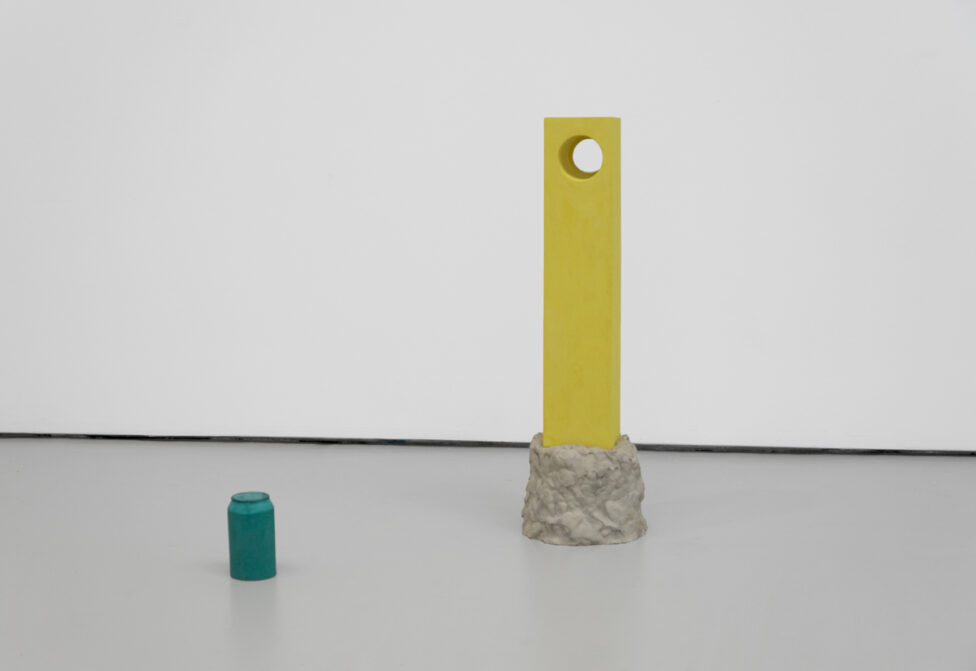
Gordon Hall, Three Part Object (Can), Part of Brothers and Sisters, 2018

Gordon Hall, Mug (white), 2018.
OT: When I met your family for the first time, I got the impression you grew up around erudite people who were fundamentally interested in language, meaning, and culture in a way that I found to be very fun. Will you explain what happens to an object when it is perceived and language becomes an integral part of our understanding of that object, or perception?
GH: Coming from a very academic and language-focused family, and coming up in our education system that separates the linguistic from the spatial, it has been important to me to figure out ways to bridge the gap between language-use and object-use. I am guessing you can relate to this, because anyone who finds themselves straddling disparate ways of working, or disparate kinds of academic departments, feels the chasm that gets set up between these realms, when there are really so many points of overlap. For example, a pair of parentheses have a linguistic meaning, (the creation of an aside) but they also have a spatial function (the creation of a little word room in the midst of the sentence.) I couldn’t help but wonder about what would happen if I could hold the parentheses on my hands, and stand inside them as if I was the word. A whole world opened up for me when I started relating to language with my body, in the studio, and as a writer. Do you have thoughts about this institutional and experiential gap between the linguistic and the aesthetic, given your work in philosophy, studio art, and fim?
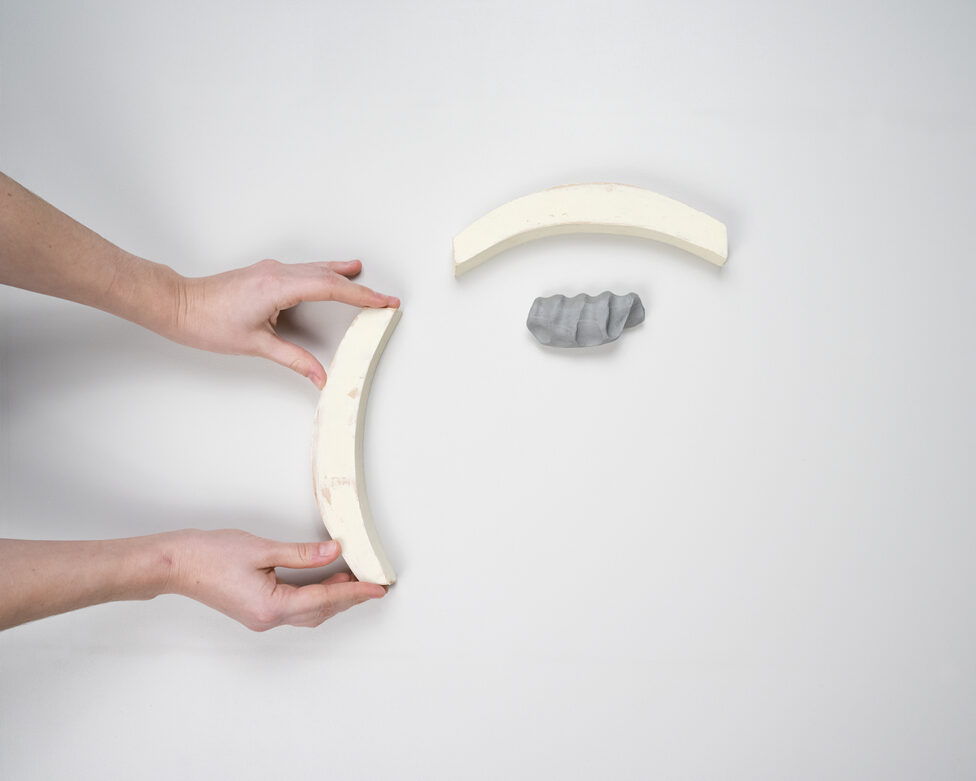
Gordon Hall, AND PER SE AND, 2016.
OT: I often think about the challenges that change the original meaning of certain symbols and gestures through appropriation. As a collagist and filmmaker, the question of what can be said through images that cannot be said out-loud, for whatever reason, is always at the forefront of my thinking. As a cut-and-paste collagist, I’ve learned the hard lesson that repeating the aesthetics of Fascism does not disempower them; nevertheless, I feel the important impulse as an artist to reinvent, confront, and de-stabilize dominant aesthetics. Yet, some shapes seem very stuck in their -ness, like a +, or a phallus, or the acronym S.O.S. In your opinion, are these shapes and objects lost or can we reclaim them? Your work suggests we can…. Should we? If so, how?
GH: This is an interesting question, and I’m not sure about the answer. I need to believe that no symbol, image, or word is beyond our ability to challenge, even if the effort is futile. For example, it is fundamentally important for many transgender people to use words that are different than the ones that everyone else uses for things that seem commonsensical, like pronouns, or names for gendered body parts. But, even if people try to make us feel like we are speaking nonsense, we need to keep asserting that just because everyone uses a particular name for something, it doesn’t mean we need to call it that too, if that makes sense. So, while I don’t think it is always possible to maneuver within extremely sedimented ways of understanding, looking, or naming, there are situations where we have to just keep trying.
OT: In the “Brothers and Sisters” performance, the sweat that formed a UU-shape on your shirt at one point led me to perceive the shape on the painting behind you. The moment was fleeting, yet there it was, a shape that is alphabetic and part of a universal grammar that means a few different things. That quandary, or epiphany, led me to think about the vantage points in the space and how a multitude of meaning was being created by connecting sounds, gestures, and object-shapes. We learn to do this as children and it’s how we become very logical and logistical. In learning to read we open a Pandora’s box, but we bury the most primal creativity we are born with. As in: This is this and that is that. Your work seems to want to undo that a bit, so we can perceive differently…
GH: Yes. Although I don’t find language to be the problem, because I believe that we are fundamentally linguistic creatures. I think the problem is that language is separated from bodies and things and then elevated above them, used to explain, and, often, explain away. There are other ways to think about language as an extension of gesture, and not as a translation of meaning. One of my favorite essays is Merleau-Ponty’s “The Body as Expression and Speech” in the Phenomenology of Perception. I love the way he describes language as a fundamental capacity of bodies.
OT: Recently, I was a participant in mandatory Sexual Harassment training, and the presenter kept referring to the word “gesture” as “guessture,” and although I think it was just an unconventional pronunciation, it similarly it made me think of the relationship between gestures, guessing, and meaning. As you know, I have a deaf brother and I know ASL. You are learning ASL right now. The sign for “family” is one of my favorites because it cannot be mistaken for any other sign. How has learning ASL changed you?
GH: Well I am feeling sheepish right now because I have not been practicing as much since last spring, just because it has been feeling hard to make time for everything I want to do in life, and I have been trying to not spread myself so thin all the time. And I also hesitate because there are so many tacky examples of hearing artists using ASL in their work in ways that are tokenising or inaccurate. So I won’t be using ASL in my work in this way. But it has affected what I am doing and how I experience the relationships between language, expression, bodies, and objects. I started learning because of the artist Joseph Grigely, who co-founded the MA in Visual and Critical Studies that I attended at SAIC, and who I worked for as his studio assistant while I was in school, and also because of an event I organized with Christine Sun Kim at Recess, through which we became friends. Really I just wanted to be able to talk with these two amazing deaf friends. I have so many thoughts about ASL but the main thing is just that it is quite possibly a superior language than spoken English–more expressive, detailed, and economical, and I wish it were taught in all K-12 schools so that we were all at least bilingual. This would be great for deaf people, but also for hearing people to communicate better, to converse in noisy places, and also for people who lose their hearing as they get older–if everyone spoke ASL we could seamlessly shift into this stage of life together without the isolation produced by late in life hearing loss. So, basically it is incredible, and also very humbling to learn a new language and fumble along as I learn.
OT: To my mind, your performance brings human interpretation to the most base level, and though the art looks clean and all the gestures are tethered, careful, and slow, we are forced to perform mental gymnastics that are rather labored and uncomfortable. It is a point of critique that I too have faced from people who go see performance or film and expect entertainment, immediate gratification, and hate living in confusion. But in my experience, the confusion I get from your work becomes such an embodied part of me that I realize something about your work years after my initial encounter. For example, I was in the performance STAND AND, in which we enacted a movement score that was all about various kinds of leaning, but I only understood what leaning truly meant when I started working behind a counter at a French cafe, doing service work on the clock, which made me understand that the performance was not merely whimsical, but socially conscious, even political. I wonder if it is just me, or if others have felt that… How do you think about the people who interact with your work? What is your wish for them?
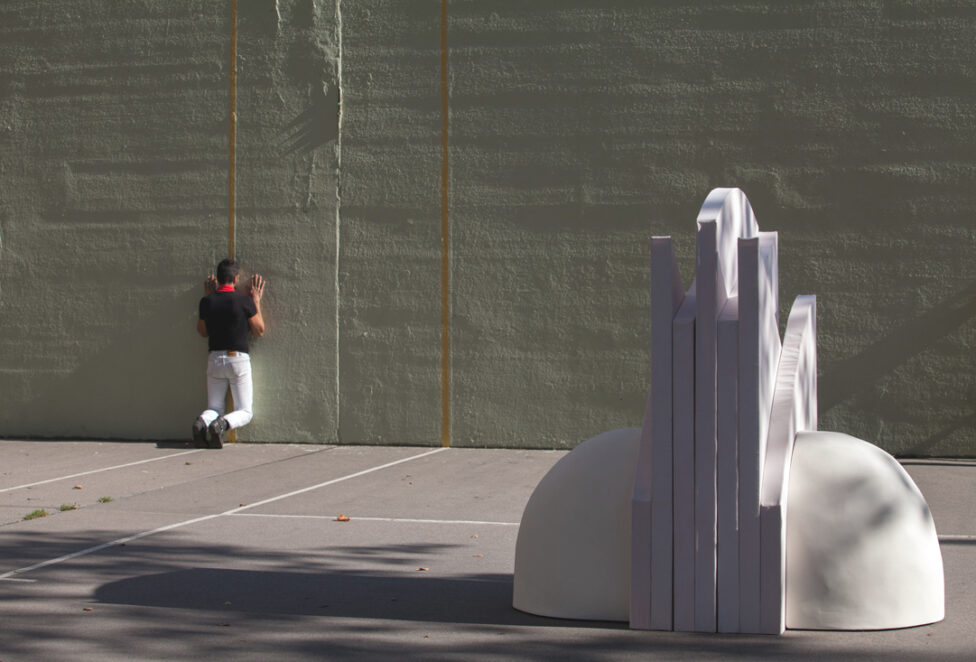
Gordon Hall, STAND AND, 2014, performance view. Photo: Amy Mills
GH: My work is certainly slow, and quiet, and a little bit stubborn. It wants you to look at it but isn’t necessarily going to look back. I want the viewers to feel like witnesses. My wish is for people to see something that is beautiful but in a way that feels unfamiliar, or familiar from a distant future or past time. I hope the work helps slow down their viewing, so they can relax into looking and being in the space with objects and other bodies. I need my work to do these things for myself also–I make it because I learn from it how to stay in the perceptual mode I want to be in. So it is as much for me as it is for the viewers. I don’t see these things as opposed. And it would be incredible if anyone was still thinking about something I made years afterwards. I’m very amazed to hear that being in that work affected you in this way.
OT: Tell me, why have you chosen such a challenging mode of address for the viewer?
GH: Art making has been so crucial to living for me because it holds open the possibility that there are modes of sense-making that are not discernible to us at present, but might be. Abstract languages, whether in movement or objects or images, point towards another time and place in which different modes of sense making could prevail. And this belief is a really important part of surviving the day-to-day, in my experience. I find it always a welcome challenge to continue to try to see art and make art that is not immediately reducible to the ways of thinking we currently have available to us as a culture.
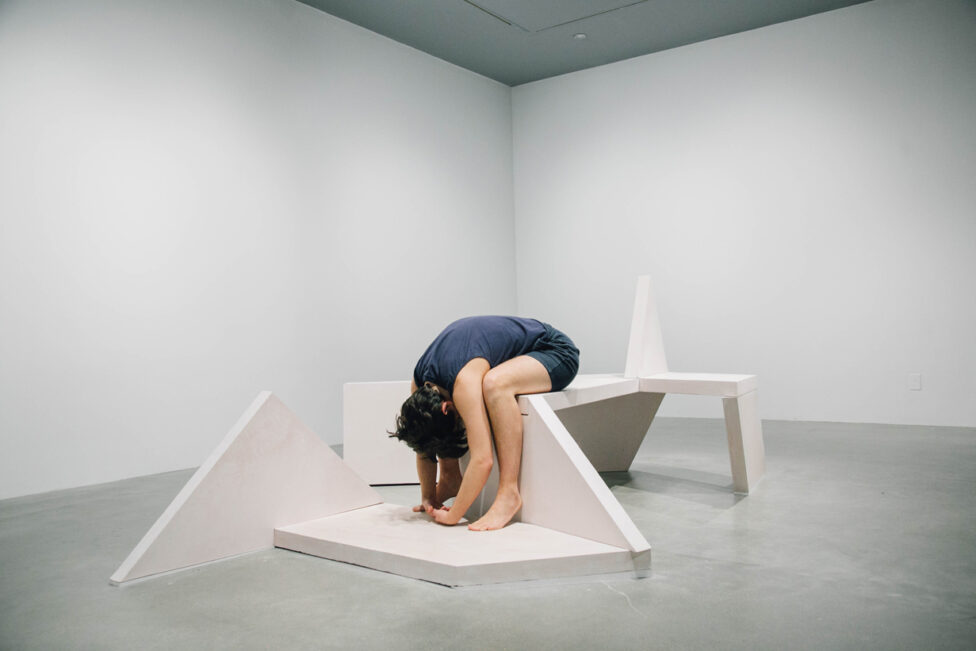
Gordon Hall, The Number of Inches Between Them, 2017-2018, performance view. Photo: Cassandra Rodriguez.

